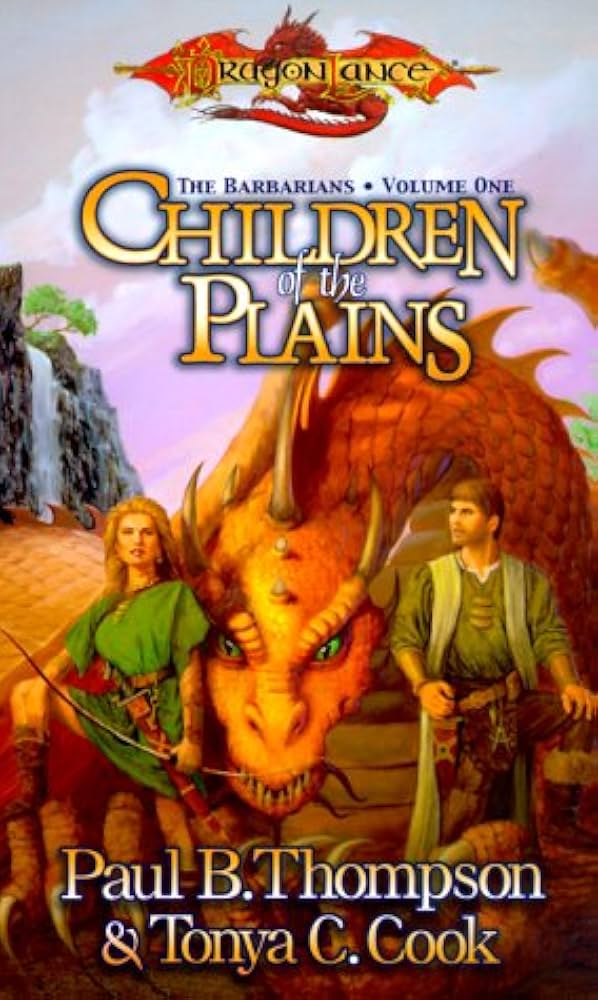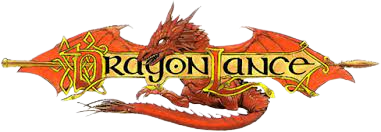Children of the Plains

Table of Contents
ToggleOverview
Children of the Plains is the first novel in the Barbarians trilogy, which tells the origin story of Goldmoon, the revered cleric from Chronicles, and provides a deep exploration into the Plainspeople of Abanasinia.
Set years before the War of the Lance, the novel focuses on Goldmoon’s upbringing in a tribal society governed by tradition, threatened by change, and wrestling with spiritual crisis. It’s a coming-of-age story that is part myth, part political drama, and deeply tied to the themes of faith, identity, and destiny.
Main Character: Goldmoon (as a young woman)
- The daughter of the Chieftain of the Que-Shu, a noble and spiritual leader among her people.
- Born into privilege, prophecy, and pressure, she is expected to become a symbol of unity for the Plains tribes.
- Intelligent, strong-willed, and compassionate, but often torn between her duty and personal desires.
Supporting Characters
- Arrowthorn – Goldmoon’s father and the chieftain of the Que-Shu, a wise but politically ambitious man.
- Jolith – A tribal warrior and Goldmoon’s childhood companion, caught between loyalty to his tribe and his love for Goldmoon.
- Locar – A tribal prophet who wields dangerous influence; he sees Goldmoon as a key to a great spiritual destiny.
- Riverwind – Though not yet her love interest, Riverwind appears later in the series as her future companion and spiritual counterpart.
Setting
- The plains of Abanasinia, far from the cities and towers of magic seen in other Dragonlance books.
- A world of tribal customs, oral tradition, ancestral spirits, and natural rhythms.
- Each tribe has its own customs, rivalries, and legends, which come into conflict as change begins to stir—especially as the gods remain absent.
Plot Summary
The Chieftain’s Daughter
Goldmoon grows up in the Que-Shu village, being groomed to one day become both chieftainess and spiritual leader. Her status as the daughter of the leader comes with privilege but also intense scrutiny. She is believed by some to be touched by the old gods, even though the gods have long been silent in Krynn.
The Struggle for Unity
Her father, Arrowthorn, seeks to unite the fractured Plains tribes, but internal politics, jealous warriors, and rival chieftains create constant conflict. Goldmoon becomes a symbol of hope and tension, as many see her as the destined figure to bring peace.
Meanwhile, Goldmoon begins to realize that the ancestral beliefs of her people are incomplete—that the old gods may not be truly gone, and that something sacred stirs deep within her.
Trials and Visions
Goldmoon experiences dreams and visions, encounters sacred artifacts, and begins to question the spiritual hollowness of her people’s current rituals. Some believe her to be a prophetess; others think she is delusional.
As the political situation deteriorates, Goldmoon is faced with:
- Choosing between love and duty
- Challenging ancient traditions
- And redefining her identity not as someone born to rule—but someone born to lead spiritually.
Foreshadowing Riverwind
Though Riverwind plays a minor role in this first book, his presence is hinted at—as a member of a neighboring tribe who will soon cross paths with Goldmoon. The stage is being set for the epic partnership that will emerge in the later Chronicles.
Themes
- Faith in a Godless World – With the gods still absent from Krynn, Goldmoon’s spiritual journey becomes a metaphor for yearning and rediscovery.
- Tradition vs. Change – Goldmoon is caught between respecting her ancestors and forging a new path for her people.
- Coming of Age – Her arc is about becoming more than what others expect of her—as a leader, as a woman, and as a voice of something greater.
- Cultural Identity – The novel celebrates the unique Plainspeople culture, language, and worldview, making them more than just a background detail in Dragonlance lore.
- Prophecy and Destiny – There are echoes of myth throughout the novel, suggesting that Goldmoon is meant for more, even if she doesn’t yet understand her role in history.
Tone & Style
- Mythic and meditative, with a strong focus on culture and personal transformation.
- Poetic and lyrical, with moments of intense emotion, often tied to nature, dreams, and spirituality.
- Not heavy on action—this is more about internal conflict, ceremonial drama, and subtle political shifts.
Reception
Children of the Plains is praised for:
- Bringing depth and dignity to the often underrepresented Plains cultures in Dragonlance.
- Expanding Goldmoon’s character, showing she’s more than a supporting cleric—she’s a leader in her own right.
- Rich worldbuilding that honors oral tradition, spirituality, and indigenous-coded societies.
- Strong emotional resonance, especially for readers who enjoy coming-of-age journeys and spiritual awakening.
Some criticisms:
- Slower pace than more battle-focused Dragonlance books.
- Focuses more on personal and cultural stakes than global fantasy conflict.
Final Thoughts
Children of the Plains is a gentle yet powerful origin story—a tale of becoming, set in a part of Krynn often overlooked. It deepens the mythos of Goldmoon, gives voice to the Plainspeople, and shows how true strength can begin in silence, sorrow, and searching.
Recommended for:
- Fans of Goldmoon and Riverwind
- Readers interested in tribal cultures, spiritual journeys, and prophecy
- Anyone looking for a character-driven, culturally rich prequel to the events of Chronicles
“Before she was the voice of the gods, she had to find her own.”
